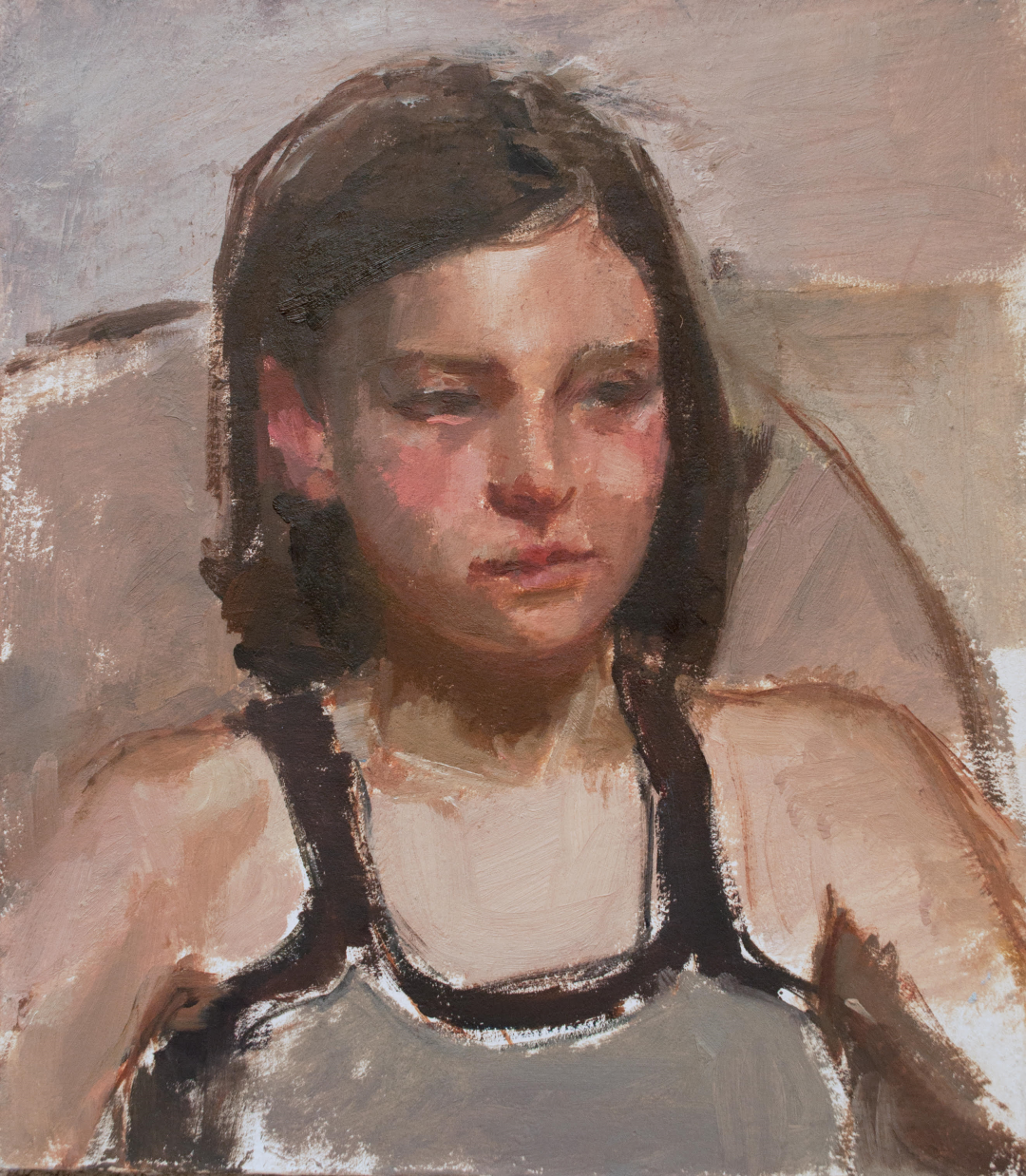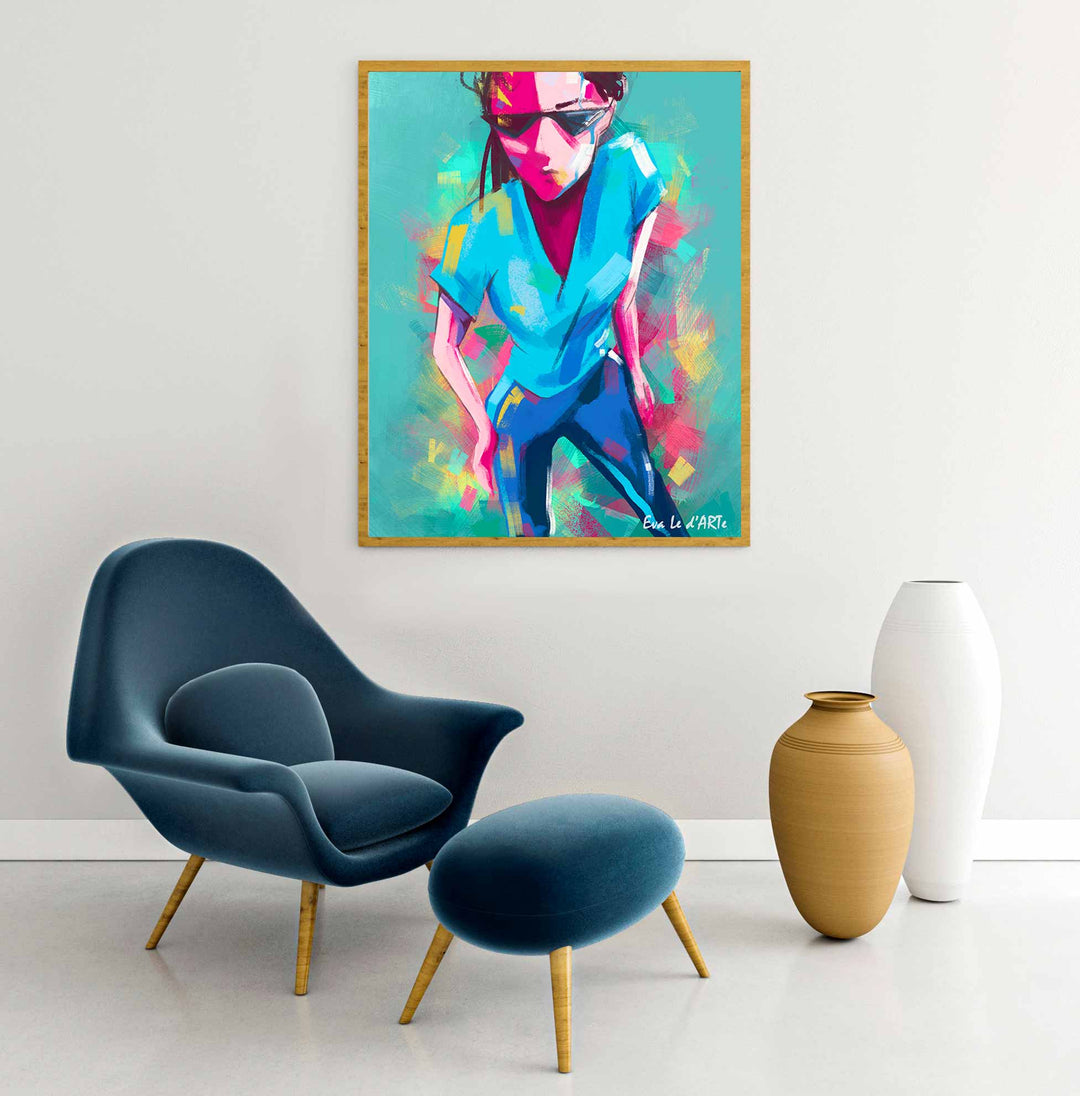Discovering Iconic Artists and Their Influences on Figurative Oil Painting
The Function of Feeling and Expression in Metaphorical Oil Paint: A Thorough Evaluation of Subject and Structure
The interaction of emotion and expression in figurative oil painting serves as a vital lens through which one can analyze the intricate relationship in between subject issue and composition. Artists harness numerous techniques, from shade choice to brushstroke dynamics, to grow psychological vibration within their jobs.
Comprehending Feeling in Art
Feeling in art works as an effective avenue for expression, enabling artists to communicate intricate sensations via their work. In figurative oil painting, this psychological depth is commonly portrayed through the representation of the human number, catching the subtleties of human experience. The choice of subject, color palette, and brushwork all add to the psychological vibration of an item.
Artists frequently attract upon personal experiences, social problems, or universal motifs to stimulate sensations in the visitor. For example, a picture might mirror vulnerability, while a dynamic figure in movement can represent freedom or chaos. These emotional threads attach the viewer to the artwork, promoting a dialogue that goes beyond the visual medium.
Additionally, the interplay in between light and darkness can enhance emotional strength, leading the customer's gaze and accentuating specific elements within the composition. Using structure in oil paint additionally adds layers of intricacy, inviting a responsive reaction that enhances the psychological experience. On the whole, recognizing emotion in art is essential for appreciating the subtleties that characterize metaphorical oil paint, as it changes mere depiction right into an extensive exploration of the human condition.
Key Aspects of Structure
In the realm of metaphorical oil paint, the structure functions as the underlying framework that organizes visual aspects and enhances the psychological story. Important components of composition include balance, contrast, prime focus, and rhythm, each contributing to the total effect of the art work.
Balance refers to the circulation of aesthetic weight within the painting, which can be accomplished via symmetrical or unbalanced arrangements. A healthy composition provides stability, allowing the visitor to engage with the item sympathetically - figurative oil painting. Comparison, on the other hand, involves juxtaposing different elements, such as dark and light or cozy and trendy colors, to assist the audience's eye and evoke psychological actions
The focal point is vital, as it routes interest to one of the most significant component of the painting, commonly highlighting the psychological core of the story. Through strategies like color saturation or positioning, artists can emphasize this area successfully. Rhythm pertains to the repetition of aspects, creating a sense of activity and flow throughout the structure. By masterfully integrating these essential elements, musicians can craft psychologically resonant and compelling metaphorical oil paints that mesmerize and involve their target market.
Topic and Its Impact
Subject matter plays a pivotal role in metaphorical oil paint, as it not only works as the structure for the narrative yet additionally forms the audience's analysis and emotional engagement with the art work. The selection of topic-- be it a singular figure, a group dynamic, or a thematic depiction-- directly affects the emotional ambience communicated to the target market.

For example, portraits usually stimulate individual links, revealing the complexities of human expression and personality, while scenes portraying communal tasks can produce a sense of belonging or fond memories. The social and historic context of the subject matter improves the viewer's understanding, triggering much deeper representations on social standards, values, and the human problem.
Various subject issues likewise create varying levels of engagement; a remarkable conflict portrayed via numbers in stress might generate feelings of stress and anxiety or empathy, while calm landscapes can conjure up harmony and consideration. Eventually, the influence of topic in metaphorical oil painting is profound, as it acts as a channel for emotional resonance, assisting the audience's feedback and interpretation, and cultivating a link between the art work and the viewer. This interplay is necessary for the successful communication of the musician's intent.
Techniques for Evoking Sensations
The efficiency of figurative oil painting in sharing emotions is considerably Get the facts affected by the methods utilized by the artist. One of one of the most crucial methods is using color concept, where the strategic selection of hues can stimulate certain emotional reactions. Warm colors, such as reds and oranges, commonly generate sensations of passion or aggressiveness, while cooler tones like blues and eco-friendlies tend to stimulate peace or sadness.
Another important strategy is the manipulation of light and darkness, known as chiaroscuro. This method boosts the three-dimensionality of numbers, producing dramatic contrasts that can magnify psychological deepness. The placement of light can guide audiences' emotions, highlighting specific aspects of the composition.
Brushwork also plays a crucial function; loose, expressive strokes can communicate power and spontaneity, whereas smoother methods may recommend serenity or accuracy. Furthermore, the plan of subjects within the composition can affect psychological impact. Close closeness can suggest affection, while distance may suggest seclusion.
Ultimately, the mix of these strategies allows musicians to craft narratives that resonate with the visitor, changing a mere aesthetic experience into an evocative emotional journey. - figurative oil painting

Case Research Studies of Notable Functions
Taking top article a look at significant works of figurative oil paint discloses just how different methods are employed to evoke powerful emotions. One exemplary situation is Edvard Munch's "The Scream," where the altered number and swirling history share existential fear. Munch's usage of color-- deep blues and brilliant oranges-- escalates the emotional effect, showcasing how scheme options can shape viewer experience.
Another considerable work is Pablo Picasso's "Les Demoiselles d'Avignon." Right here, vibrant brushstrokes and fragmented types mirror a tumultuous psychological landscape, testing conventional depictions of the women number. Picasso's ingenious structure not only catches the customer's attention yet also welcomes contemplation on themes of identification and sexuality.
Furthermore, Frida Kahlo's "Both Fridas" uses a touching expedition of duality and self-identity. The different figures, connected by a common heart, exhibit Kahlo's emotional deepness and individual narrative. figurative oil painting. Her thorough focus to information and symbolic elements serve to engage audiences on a natural degree
These instance research studies emphasize the profound link between feeling and make-up in metaphorical oil painting, disclosing how artists harness technique to connect complicated feelings and stories that reverberate throughout time and culture.

Verdict
To conclude, the interplay of emotion and expression in metaphorical oil paint significantly improves the visitor's experience and analysis visit the website of the artwork. Through a careful selection of subject and compositional strategies, artists share profound narratives that resonate on both universal and personal degrees. The application of color chiaroscuro, theory, and brushwork further amplifies psychological deepness, changing each canvas into a powerful representation of the complexities of the human experience.
In figurative oil painting, this psychological deepness is often represented through the depiction of the human number, capturing the nuances of human experience.In addition, the interaction between light and shadow can amplify psychological intensity, directing the customer's gaze and drawing interest to specific components within the composition. The use of texture in oil paint even more includes layers of complexity, inviting a tactile response that enhances the emotional experience.The focal factor is essential, as it guides interest to the most substantial component of the painting, typically highlighting the psychological core of the narrative. Inevitably, the effect of subject matter in metaphorical oil painting is extensive, as it serves as a channel for emotional resonance, assisting the customer's response and analysis, and promoting a connection between the observer and the art work.